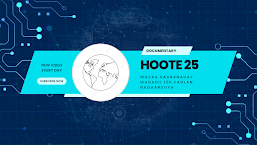**Virtual Assistants: The Future of Personal and Professional Support**
Virtual assistants are digital entities designed to assist users in various tasks, from answering questions and providing information to performing specific actions or tasks. They are powered by artificial intelligence (AI) and natural language processing (NLP) technologies, allowing them to understand and respond to human language. Virtual assistants have become increasingly popular in recent years, with major tech companies like Amazon, Google, Apple, and Microsoft offering their own versions. This article will explore the concept of virtual assistants, their applications, challenges, and future directions.
**1. Understanding Virtual Assistants**
Virtual assistants are digital entities that can understand and respond to human language. They are powered by AI and NLP technologies, allowing them to understand the context of a conversation and provide relevant information or perform specific tasks. Virtual assistants can be accessed through various devices, including smartphones, smart speakers, and computers.
**2. Components of Virtual Assistants**
Virtual assistants involve several key components:
- **Speech Recognition**: Virtual assistants use speech recognition technology to understand spoken language and convert it into text.
- **Natural Language Understanding**: Virtual assistants use natural language understanding technology to understand the meaning and context of text.
- **Knowledge Base**: Virtual assistants use a knowledge base to provide information and answer questions.
- **Task Execution**: Virtual assistants can perform specific tasks, such as setting reminders, sending messages, and making reservations.
**3. Applications of Virtual Assistants**
Virtual assistants have a wide range of applications across different industries:
- **Personal Assistance**: Virtual assistants can help users with various personal tasks, such as setting reminders, managing calendars, and answering questions.
- **Customer Service**: Virtual assistants can be used in customer service to answer frequently asked questions, provide information, and assist with basic troubleshooting.
- **Healthcare**: Virtual assistants can be used in healthcare to provide information about medical conditions, schedule appointments, and answer questions.
- **Education**: Virtual assistants can be used in education to provide information, answer questions, and assist with homework.
- **Business**: Virtual assistants can be used in business to schedule meetings, manage calendars, and assist with administrative tasks.
**4. Challenges in Virtual Assistants**
Despite their popularity, virtual assistants face several challenges:
- **Accuracy**: Virtual assistants can sometimes provide inaccurate or irrelevant information.
- **Privacy**: Virtual assistants can raise privacy concerns, as they often require access to personal information.
- **Security**: Virtual assistants can be vulnerable to security threats, such as hacking and data breaches.
- **Ethical Considerations**: Virtual assistants can raise ethical considerations, such as bias and fairness.
**5. Future Directions**
Despite these challenges, virtual assistants continue to evolve, with researchers exploring new techniques and approaches to improve accuracy and performance. Some future directions in virtual assistants include:
- **Personalization**: Developing techniques for personalizing virtual assistants to better meet the needs of individual users.
- **Multimodal Interaction**: Developing techniques for enabling virtual assistants to understand and respond to multiple modes of interaction, such as speech, text, and gestures.
- **Emotion Detection**: Developing techniques for enabling virtual assistants to detect and respond to human emotions.
- **Ethical Considerations**: Addressing ethical considerations in virtual assistants, such as privacy, security, and bias.
**6. Conclusion**
Virtual assistants are digital entities designed to assist users in various tasks, from answering questions and providing information to performing specific actions or tasks. They are powered by AI and NLP technologies, allowing them to understand and respond to human language. Virtual assistants have a wide range of applications across different industries, from personal assistance and customer service to healthcare and education. Despite their challenges, virtual assistants continue to evolve, with researchers exploring new techniques and approaches to improve accuracy and performance. As the field continues to advance, virtual assistants are likely to play an increasingly important role in our daily lives, providing personalized and intelligent support in various contexts.


.jpeg)

.jpg)

0 Comments